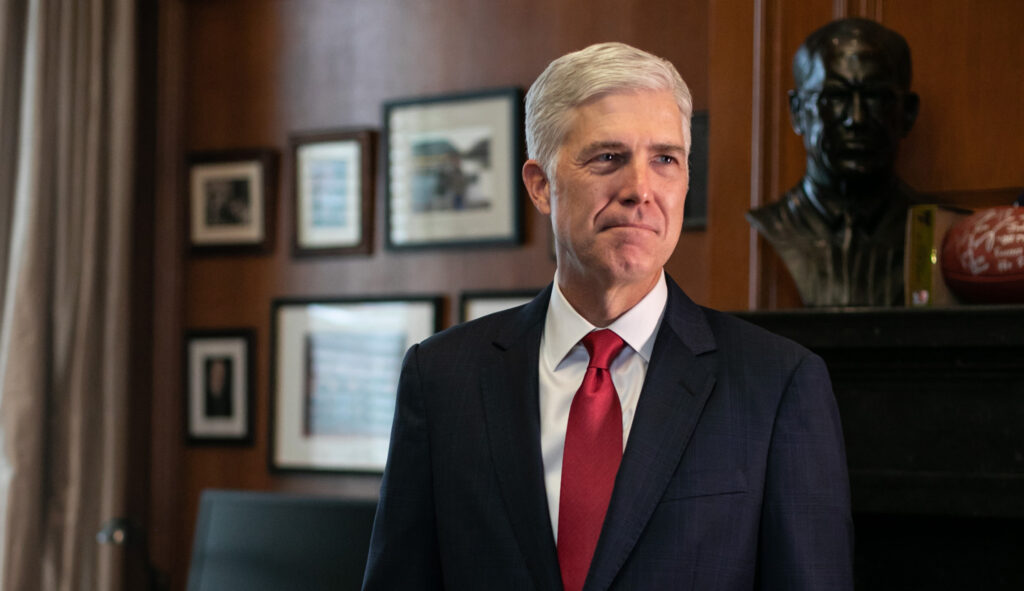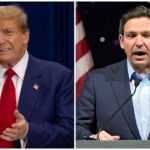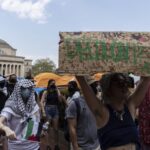
Supreme Court Justice Neil Gorsuch on Tuesday questioned the Biden administration’s ranking Justice Department lawyer about the scope of a federal criminal law used against protesters during the Jan. 6 riot at the Capitol charged for “obstruction” of an official proceeding.
Two of the four counts against former President Donald Trump in special counsel Jack Smith’s election subversion case are also related to the same question, which is whether the statute known as 1512(c)(2) that makes it a federal crime to “corruptly” obstruct an official proceeding applies to otherwise nonviolent protesters. Gorsuch, an appointee of Trump, asked a range of questions, including whether a “mostly peaceful protest” would be covered under the law.
The justice grilled Justice Department Solicitor General Elizabeth Prelogar on whether the same law could be applied to Rep. Jamaal Bowman (D-NY), who was criminally charged for setting off a fire alarm in the Capitol last fall ahead of a government funding vote.
“Would a sit-in that disrupts a trial or access to a federal courthouse qualify? Would a heckler at today’s audience qualify, or a heckler at the State of the Union address? Would pulling a fire alarm before a vote qualify for 20 years in federal prison?” Gorsuch asked without directly naming Bowman.
Prelogar responded that “to the extent that your hypotheticals are pressing on the idea of a peaceful protest, even one that’s quite disruptive, it’s not clear to me that the government would be able to show that each … of those protesters had corrupt intent.”
“So a mostly peaceful protest … that actually obstructs and impedes an official proceeding for an indefinite period would not be covered?” Gorsuch asked, noting in his hypothetical that “they intend to do it.”

The phrase “mostly peaceful protest” was repeated in public discourse during the summer of unrest in 2020, when left-leaning protesters took the streets across the United States in protest over the death of George Floyd, and it was used in a now-infamous chyron during a 2020 CNN broadcast, where a reporter stood in front of a burning structure in the streets of Kenosha, Wisconsin.
Prelogar told Gorsuch that if a hypothetical person intended “to obstruct and we are able to show that they knew that it was wrongful conduct with a consciousness of wrongdoing, then yes, that is a 1512(c)(2) offense,” Prelogar clarified.
The defendant in the case that was argued on Tuesday, Fischer v. United States, is former Pennsylvania police officer Joseph Fischer, who is accused of being part of a crowd that pushed against Capitol Police officers while calling on those around him to “hold the line.”
The core question is whether the law at issue was only intended to apply to evidence tampering and whether applying it to protesters who went into the Capitol was too broad of an interpretation.
More than 300 other defendants from that day of protest and rioting have been charged with violating the same obstruction law, which was enacted in 2002 as part of the Sarbanes-Oxley Act in the wake of the Enron scandal.
Mike Davis, a conservative ally of Trump who formerly clerked for Gorsuch, said Prelogar “proved the point of these Jan. 6 defendants … that the Biden Justice Department … took that vague and overbroad criminal and politicized it and weaponized it against Trump and Trump’s Jan. 6 supporters.”
“And then she danced around on whether the government could use that statute against BLM and Antifa and left-wing activists,” Davis said.
CLICK HERE TO READ MORE FROM THE WASHINGTON EXAMINER
The nine justices on Tuesday appeared divided along ideological lines, with six of the Republican-appointed members appearing wary of the DOJ’s interpretations about the breadth of the criminal statute, while at least three jurists seeming open to finding a middle ground to interpreting the law.
A decision in the case is expected by the end of June.







